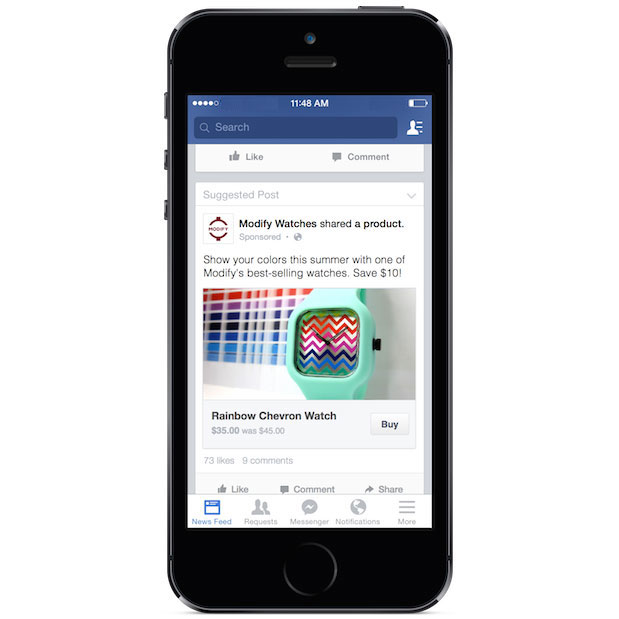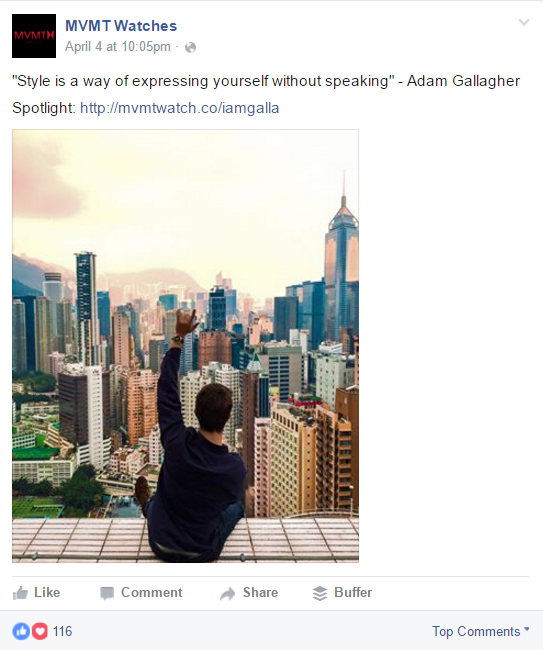You’ve seen the headlines:
“Why Is Facebook Engagement Suddenly Dropping?”
“Twitter growth grinds to a halt”
“Instagram Engagement Slump Continues”
And my personal favorite:
“This Chart Explains the Reachpocalypse and Why Facebook is Laughing All the Way to the Bank”
From its once vaunted status as every Internet marketer’s favorite golden goose, social media’s had a tough go of it recently. So why would you believe a headline that includes the phrases “Social Selling” and “Will Dominate the Future of E-commerce”?
Easy. Because it will.
In fact, as Jay Baer points out, the rise of social commerce is one of the key factors behind social media’s current organic troubles:
“As organic reach dropped from approximately 12% [in October of 2015] to 6% (and now often at 1%) [in February of 2016], Facebook’s stock price moved from nearly $50 to nearly $70, adding billions of dollars in market capitalization.
Clear-eyed business observers have been raising the alarm about building your house on rented land for years, but Facebook has still been able to pull off the greatest Gillette scam ever (you give away the razor, and then sell the blades).”
In other words, social media is banking on the dominance of social selling and could basically care less how your company’s non-paid, organic efforts suffer as a result.
Thankfully, it’s not all bad news. Cumulative data from Statista shows that worldwide social commerce revenue has grown from $5 billion in 2011 to a whopping $30 billion in 2015. Similarly, BI Intelligence’s 2015 Social Commerce Report found, “Social-driven retail sales and referral traffic are rising at a faster pace than all other online channels.”
Those numbers are why Facebook, Twitter, and Pinterest have not only invested heavily in creating robust advertising features but native shops and “buy now” options as well that allow users to purchase products without ever leaving their favorite platform.
However, going native doesn’t mean simply setting up shop on across the social media spectrum and just dumping in your site’s existing products and content. Instead, it’s vital to understand the native options themselves and craft your approach based on the habits of those platforms.
1. Facebook Buy Button and Shops
In July of 2014, Facebook announced a “New Way for People to Discover and Buy Products on Facebook” with the introduction of their first “Buy” call-to-action button.
Since then, with the addition of “Shop” tabs, research indicates that selling on Facebook produces an overall 5–10% lift in revenue.
How do you use Facebook’s buying options to your advantage? Treat your Facebook page like a fan club. Take MVMT Watches for example:
With over a million fans and counting, MVMT’s Timeline is a savvy mixture of commerce meets content. Naturally, the page leads off with popular products. Their posts, however, go beyond overt “Buy Our Stuff” updates and include community-building content like quotes, visually rich images, hashtags, events, and videos (all of which perform well on social media):
The results—as Spencer Stumbaugh, Director of Marketing at MVMT explains—have tallied up to over 60,000 visitors to MVMT’s “Shop” page in the first three months of 2016 and an overall .5% conversion rate within the platform. While that might not sound staggering, native purchases alone have produced “$15,000 in revenue MVMT might otherwise not have gotten.”
When it comes to your own social selling, three lessons stand out.
First, selecting which products to feature is crucial. A full 75% of MVMT’s revenue was generated by “the three products prominently displayed.”
Second, forego the temptation to simply upload your inventory in bulk. Instead, make Facebook—just like the other platforms—an exclusive experience. Share new items on Facebook before listing them elsewhere. Offer flash sales that can only fans can access. Or even get rid of old inventory by offering it for a special low price that is (again) exclusive to your Facebook audience.
Third, keep it natural. The whole point of social is to be social. Build relationships by sharing “inside jokes” and promoting causes. Encourage your fans to share their own everyday experiences and not merely product reviews.
The advice of social-selling experts Yoobly is golden on this front: “You’re not just creating a page; you’re selling a lifestyle. It’s not enough just to sell a person on your business; you have to connect with them, too.”
2. Twitter Buy Button
As with Facebook, Twitter’s “Buy” button enables advertisers to share specific products in promoted posts and allows users to make purchases by simply clicking. With payment information and address details stored on Twitter, they never even have to leave their feed.
Facebook may be great for long-term relationship building and customer loyalty, but Twitter is almost exactly the opposite. With the opportunity to have your message spread quickly and seen by millions in an extremely short timespan, it’s perfect for brands wanting to capitalize on real time events and trending topics.
Want proof? When the Golden State Warriors won the NBA championship, they advertised $35 commemorative t-shirts to their fans using the Twitter buy button. The resulting avalanche made an estimated $125,000 in merchandise sales from just one tweet.
Naturally, moving that kind of product with a single tweet is exceptional, but that doesn’t mean you can’t apply similar lessons to your own Twitter strategy.
For example, while some trending topics on Twitter are unpredictable, the vast majority aren’t. By focusing on highly-discussed real time events—like holidays, award ceremonies, news items, and (of course) sporting events—you can use keyword targeting to join in.
In that same vein, creating a mix of live tweets at conferences as well as showcasing relevant products to that specific audience is a powerful one-two punch. Even better, if your brand hosts its own Twitter Chats, or if you yourself are already an active member of one, you can piggyback “Buy Now” promoted tweets onto them as well.
Twitter also offers a host of insanely detailed targeting features to reach out beyond your own followers using other relevant accounts, behavior, spending habits, geography, interests, and devices types.
Equally powerful are the retargeting options Twitter offers. In fact, given that a mere 2–4% of website visitors complete purchases, retargeting via social—as long as you “retarget only after identifying user intent” and “limit frequency”—to enable instant purchases is quickly becoming less of an advanced digital hat trick and more of a business necessity.
Lastly, don’t overlook the obvious: being genuinely social. While not explicitly using the native buy buttons, Starbucks generated $180,000 using their @Tweetacoffee promotion.
AMC Theaters followed suit. integrating the “Buy” button into their “gift-giving” campaign during the holiday season.
What do both of these approaches have in common? They leverage natural buying patterns and major human relationships.
3. Pinterest Buyable Pins
If there’s ever a place to go wild with envy, it’s Pinterest. After seeing just how powerful the platform was in influencing purchases—it drives more traffic to websites than any other social network besides Facebook—it hopped into the native selling circle with Buyable Pins.
Generally speaking, there are several reason Pinterest trumps the other platforms in selling potential.
First, the half-life of a Pin (the time it takes to get 50% of its engagement) is 3.5 months, compared to 90 minutes for Facebook and 24 minutes for Twitter. Second, 80% of pins on Pinterest are repins, meaning they are shared from other users. This means that each Buyable Pin has the chance to reach a much wider audience. Third, Pinterest also reports that 90% of the buyers on its site are first-time buyers. If you’re looking to reach brand new people and influence first-time purchases, Pinterest is the place to be. (highlight to tweet)
The chief factor, however, is that Pinterest’s platform itself is tailormade for ecommerce. As Adweek explained:
Pinterest holds a unique position even in the realm of social media platforms. Rather than centering on personal connections, like the “big three,” Pinterest is more about connecting users with images they like, from arts and craft projects to new products from popular brands.
In this way, Pinterest serves as a giant “to do” list for the bulk of its users. Because users are already invested in these ideas, the jump to buying them is that much easier, presenting a perfect opportunity to capitalize.
While all that makes Pinterest by far the most sales-friendly platform, it doesn’t mean you should overlook its own social dos and don’ts.
All Pins, buyable or not, live and die by image quality and emotional connection, not intellectual reflection. Your own Pinning habits need to cater to the “four basic experiences people undergo while browsing through Pinterest,” rather than simply being one product after another:
Of course, you might think Pinterest is only suited to home goods, recipes, and fashion because it’s largest demographic is women, but don’t let that fool you. The male audience is the fastest growing demographic on the site, so don’t lock them out just yet.
What Native Selling Means
Whatever platform you prioritize—Facebook, Twitter, or Pinterest—it’s easy to see that native selling means the future of e-commerce will take place more and more outside of traditional websites. Giving users the ability to make purchases from within their favorite network means shortening the sales process from multiple steps—ad to product page to cart to check out—all down to a single click. It also means opening up additional revenue streams and remarketing opportunities.
Just don’t forget: The one thing native selling means above all is actually going native.
Get more content like this, plus the very BEST marketing education, totally free. Get our Definitive email newsletter.
Source: Convince and Convert













